There’s nothing quite like the sight of a beautiful garden, filled with flowers, plants, and trees. But what happens when those pesky gophers come along and start to wreak havoc? Suddenly that idyllic scene is transformed into a war zone, as these little creatures work tirelessly to destroy everything in their path. This blog post will discuss some effective ways to keep gophers out of your garden – so you can enjoy it in peace!
What Are Gophers?
Gophers are small, burrowing rodents native to North America. They belong to the family Geomyidae and can be found in grasslands, forests, and agricultural areas. Gophers have broad, flat heads; short necks; large eyes and ears; short legs; powerful claws on their front feet used for digging; long tails; and soft fur that can range from brownish-gray to yellowish-brown in color.
Gophers create complex underground tunnel systems – known as “gopher towns” – that provide them with food, water, shelter, and protection from predators. They eat a variety of vegetation such as roots, bulbs, tubers, flowers, fruits, nuts, seeds, mushrooms, and insects. Gophers will also feed on carrion or dead animals.
Gophers are important to the environment because their digging and tunneling aerate the soil and help the water penetrate more deeply into the ground. They are also prey for many predators, including foxes, coyotes, hawks, skunks, badgers, weasels, snakes, and owls.
Humans can be both beneficial and detrimental to gopher populations. On one hand, they provide food sources such as crops that gophers can eat. On the other hand, humans may accidentally kill gophers with traps or poisons in an attempt to control their numbers in a certain area [1].
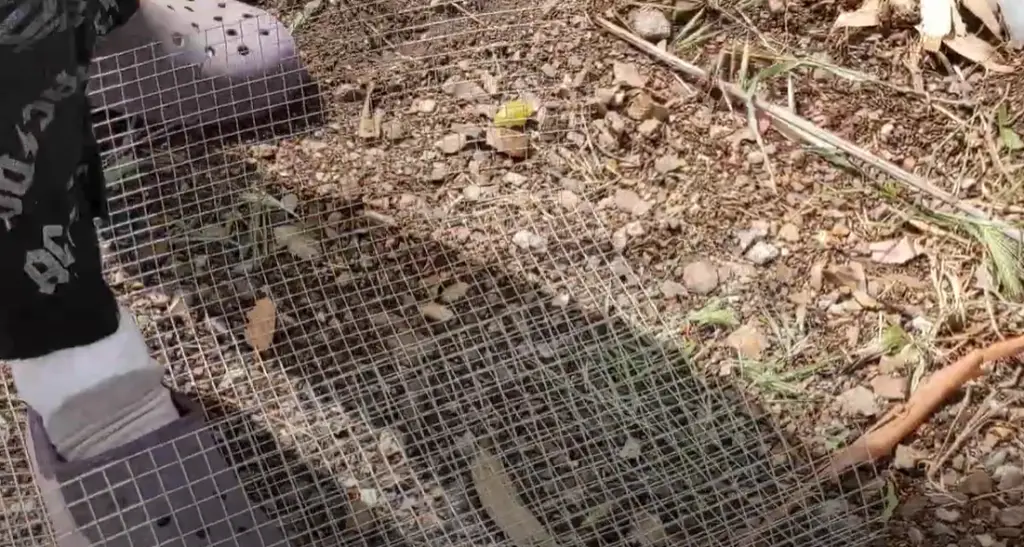
Why do you have gophers in your yard?
Food sources
Gophers are small rodents that inhabit the North American continent. They are burrowing animals and like to live near food sources such as lawns, gardens, or fields where grasses and other vegetation provide them with a regular supply of food. Gophers have also been known to feed on insects and even worms. When they burrow under your yard, it is likely because they are looking for an easy source of food.
Protection
Another reason why gophers may be inhabiting your yard is that they feel safe there. Gophers often establish tunnels underground for protection from predators, allowing them to move around during the day without being noticed. These tunnels also provide shelter from the elements, making it easier for the gopher to survive in its environment.
Mating Habits
Gophers may be attracted to your yard because of its potential for mating. Female gophers are territorial and will defend their area against other female gophers that enter. As a result, males may travel outside of their territory to find a mate, which may lead them to your yard if it seems like an ideal spot for them to reproduce.
Soil composition
The soil composition in your yard may also be a factor in why gophers have chosen to make it their home. Gophers prefer loose, sandy soils that are easy to dig through and provide plenty of food sources for them. Loamy soils are also preferred because they are high in nutrients which the gopher can use for sustenance. If your soil has these qualities, then it is likely that the gopher population will continue to grow as long as you have an adequate food source available [2].
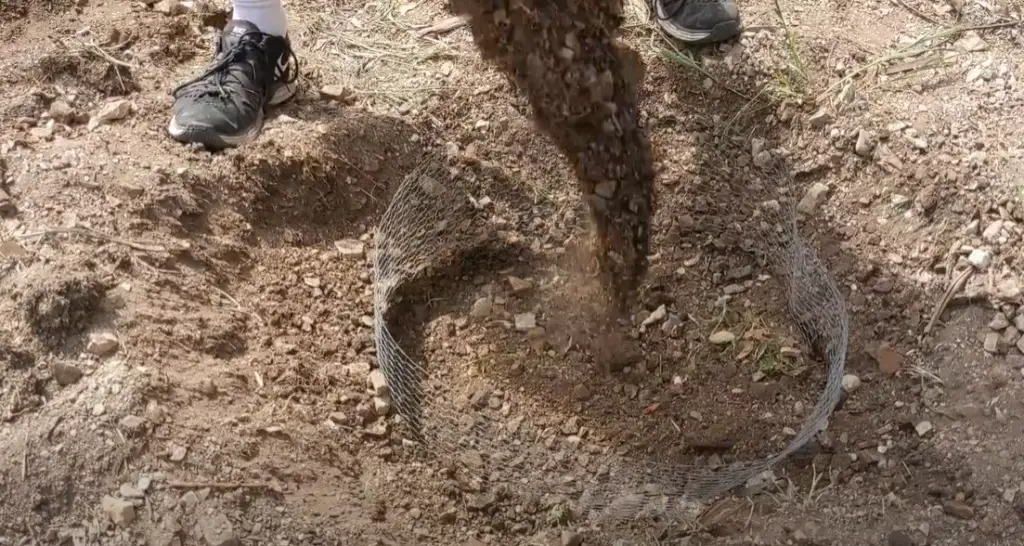
How to identify gopher damage in your yard and garden?
Gopher damage is easy to spot. Here are some common signs of gopher activity:
Mounds of dirt in your lawn or garden. Gophers will push up piles of soil as they tunnel through the ground. These mounds are often cone-shaped and may be scattered throughout your yard.
Tunnels near the surface of the soil. Gophers create a network of tunnels that run just below the surface of the soil. You may see long, narrow ridges in your lawn or garden where gophers have been pushing up the earth while digging their burrows.
Damage to plants and trees. Gophers can gnaw on plant roots, causing damage to shrubbery, flowers, and other vegetation in your yard. Tree roots are particularly vulnerable to gopher damage.
Visible gophers. If you spot a small, furry creature with a brownish coat and a white strip running down its back, it’s likely a gopher. Gophers are active during the day, so don’t be surprised if you see them scurrying around your yard. If you notice any of these signs of gopher activity in your yard or garden, it’s time to take action.
How to get rid of gophers with integrated pest management (IPM)?
Prevention
The best way to control gophers is to prevent them from entering your property in the first place. Make sure that all potential entry points, such as crawl spaces and cracks in foundations, are sealed off. Keep plants around your home or garden healthy so they are less attractive to gophers.
Avoidance
Gophers prefer soft, moist soil that is easy to dig in. Try to create an environment that gophers avoid by keeping the soil dry and hard-packed, either naturally or through irrigation. If possible, remove any potential nesting sites such as compost piles or woodpiles.
Suppression
If gophers have already invaded your yard, there are several methods you can use to discourage them from staying. Gopher traps or baits can be used to get rid of them once they’ve entered the area. You may also want to consider placing a physical barrier such as a wire mesh around your garden beds or lawns to keep them out.
Control
Gophers can also be controlled by natural predators such as cats, dogs, and foxes. However, these animals must be monitored carefully so they don’t harm other wildlife or become pests themselves. If all else fails, you may need to contact a professional pest control service for assistance in getting rid of gophers.
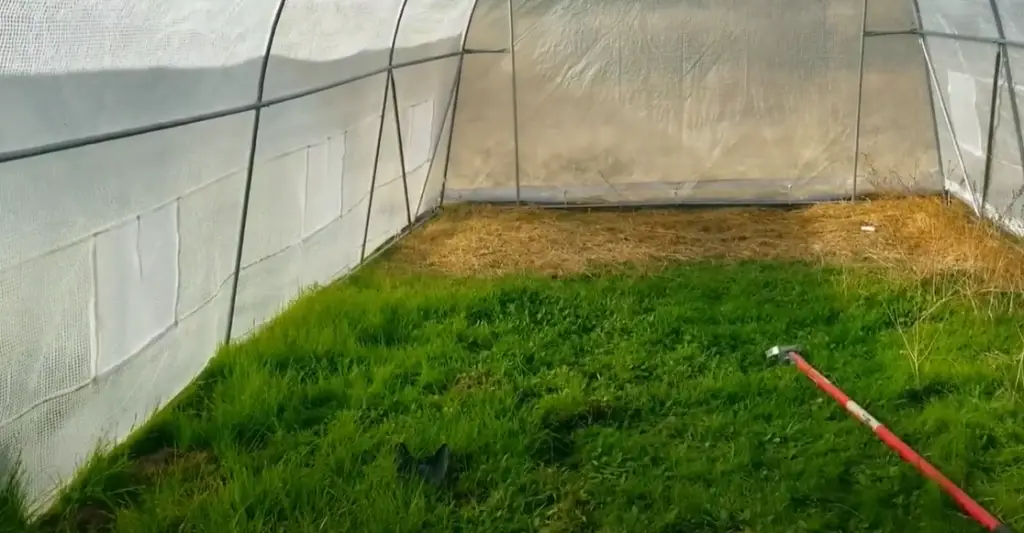
How to deal with gophers humanely & naturally in 5 ways?
No-Kill Traps
No-kill traps, also known as live traps, are the most humane way to deal with gophers. These traps catch the gophers alive and unharmed so that they can be released into another location away from your property. The best no-kill traps are designed to be easy to set up and use and should include bait such as fruits, vegetables, or grains.
Exclusion Fences
If you don’t want to deal with catching gophers, a well-designed exclusion fence may do the trick. The key is making sure it’s properly constructed so that no gophers can get through. This means burying it at least 12 inches deep in the ground with an outwardly sloping top edge facing outward. Make sure that there are no gaps or openings in the fence to prevent gophers from getting through.
Gopher mesh barrier
Gopher mesh is a metal material that’s designed to deter gophers by blocking off their entry points. The mesh should be buried 6 to 12 inches in the ground and should extend at least 18 inches above the surface of the soil. It works best when it is installed flush with the ground, so it’s important that you properly prepare your area before installing.
Cultivation
Gophers like areas where their food source is easy to access, so cultivating your land can help reduce the number of gophers present. This means removing any weeds and grasses near your home, as well as cutting down dead plants and trees. This will make it harder for gophers to find food and shelter on your property.
Repellents (Castor oil, Ultrasonic repellents)
There are a variety of natural repellents that you can use to keep gophers away from your property. These include castor oil, garlic spray, and ultrasonic repellers. You can also make your homemade repellent by mixing water with ammonia or vinegar and spraying it around the perimeter of your property.
Companion Planting
If you don’t want to deal with traps or repellents, companion planting is another option. Certain plants will naturally repel gophers such as marigolds, peppermint, garlic, and onions. Planting these around the perimeter of your property will help keep gophers away without having to use any chemicals or traps.
Natural deterrents
You can also use natural deterrents to keep gophers away from your property. These include planting lavender, spreading coffee grounds around the perimeter of your yard, or sprinkling cayenne pepper around the area. You can also introduce predators such as cats, owls, and snakes into your yard to help keep gophers away.
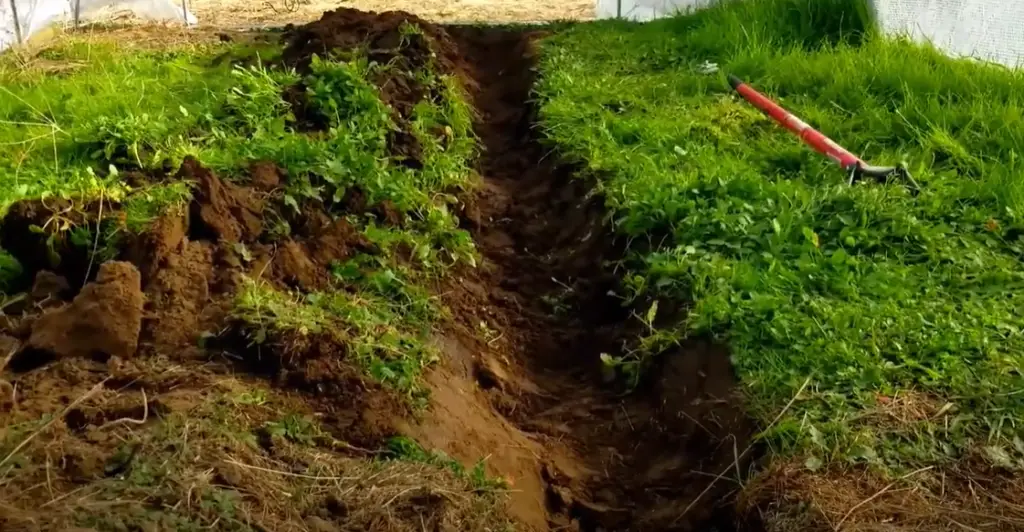
Barn Owl Nesting Boxes
Barn owl nesting boxes are a great way to attract predators into your yard who will help keep gophers away. Barn owls eat gophers, so by providing them with a safe place to nest and hide, you can create an environment that is less hospitable for gophers. By implementing these humane and natural methods, you can effectively deal with gopher infestations without harming the animals. With patience and dedication, you can have a pest-free garden or lawn in no time [4]!
Whatever you do, don’t try these tactics on gophers
Flooding
Flooding is a tactic that homeowners sometimes try to get rid of gophers, but it rarely works. It involves flooding the gopher tunnels with water in an attempt to force them out of their burrows. Unfortunately, this method can be ineffective for several reasons. For one thing, gophers are very good swimmers and can easily evade rising water levels by climbing up into air pockets in their burrows. Additionally, flooding may damage plant roots and soil structure which could lead to further problems down the line. Therefore, flooding should be avoided when dealing with gopher control.
Poisoning
Although poisoning is a more effective solution than flooding, it can still be dangerous and ineffective in some cases. Gophers are small and can be difficult to target with poison, which can lead to an inconsistent application of the product. In addition, there is a risk that unintended animals or creatures may also consume the poison and become ill or die as a result. As such, poisoning should only be used as a last resort when dealing with gopher control.
Fumigating
Fumigating is another tactic that homeowners may attempt when dealing with gopher control. This involves introducing a gas or chemical into the burrows to kill any living creatures inside. Unfortunately, this method can also be ineffective for several reasons. For one thing, gophers may detect the fumigant and escape before it takes effect. Additionally, some fumigants can be dangerous and should only be used under the direction of an experienced professional. Therefore, fumigating should generally be avoided when dealing with gopher control.
How to set a gopher trap?
- Place the gopher trap in an area where you’ve seen signs of gopher activity. The best spots are near mounds and tunnels, as these are likely to be entry and exit points for the gophers.
- Bait the trap with something appealing to gophers, such as fresh fruits or vegetables, peanut butter, or oats. As tempting as it may be, do not use poison or any other toxic bait since this can also harm other animals that may come into contact with it.
- Cover the trap with some form of camouflage like leaves, straw, or dirt to make sure that no other wildlife is attracted to it instead of the intended target – this will also help keep curious kids or pets from accidentally stepping on the trap.
- Check the trap periodically to make sure it is still in good condition and hasn’t been tampered with by any other animals.
- When you find a gopher, transport the trap safely away from your home or garden and release the animal into an open area far away from your property. Gophers are territorial creatures and will return to their original burrows once released, so this is the most humane way to remove them from your yard.
- If the gopher has already damaged parts of your lawn or garden, repair these areas after releasing the trapped animal to prevent further damage in the future.
- Clean and reset your gopher traps regularly if you notice signs of gopher activity in or around your property. This will help ensure that you catch the mischievous critters before they cause any more trouble.
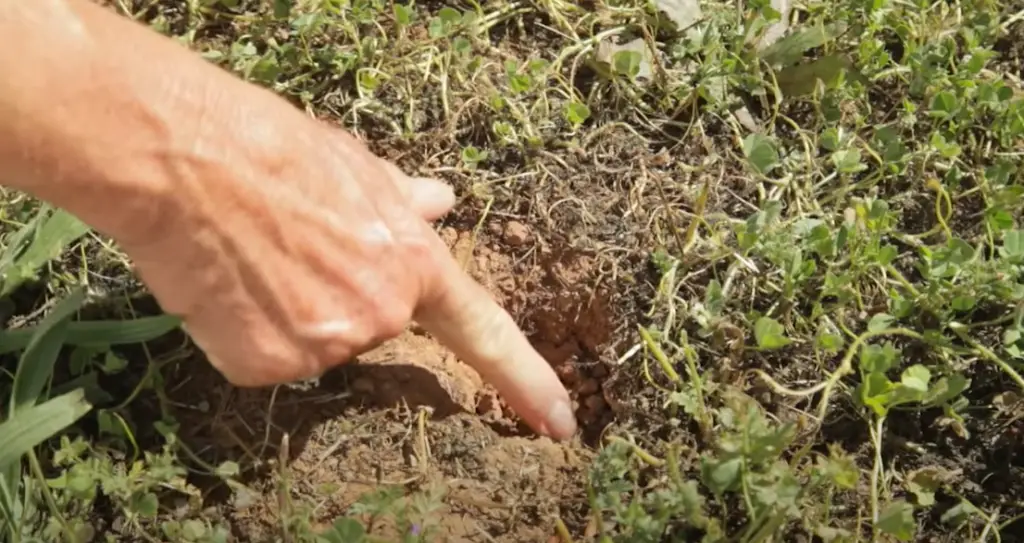
FAQ
What are gophers?
Gophers are small burrowing rodents native to North America. They have chubby bodies, short legs, and flattened tails. Gophers consume a variety of vegetation including roots, leaves, grasses, fruit, and nuts. Gophers are important in the food web as they provide sustenance for animals such as foxes, coyotes, and owls. They are also beneficial for the environment as their digging helps aerate the soil and create pathways for water to flow. Gophers can be a nuisance in gardens, lawns, and other places where they may feed on crops or plants. For this reason, many people use gopher traps and poison to eliminate them from an area.
How do I get rid of gophers?
The best way to keep gophers out of your garden is by using physical barriers such as hardware cloth or chicken wire fences along with repellents such as peppermint oil or castor oil. Traps can also be used to capture and relocate gophers away from your property. Poison baits are another option but should be used with extreme caution and only as a last resort as they can be toxic to humans and other animals. If you have an infestation, it is best to contact a professional for help.
What do gophers eat?
Gophers primarily feed on roots, leaves, grasses, fruit, and nuts. They have been known to consume insects, frogs, and small mammals when available but these are not their primary food source. Gophers will also feed on crops in gardens or lawns if given the opportunity.
Do gophers hibernate?
Gophers do not hibernate but they may become less active in cold weather by spending time underground where temperatures are more stable than above ground. They may also reduce their activity levels to conserve energy in times of limited food availability.
What is the difference between a gopher and a groundhog?
Groundhogs, also known as woodchucks, are larger than gophers and have longer tails, bigger feet, and more pointed faces. While both animals can be found burrowing in the ground, groundhogs will often build dens above ground while gophers typically only tunnel below. Groundhogs are herbivores while gophers may occasionally feed on small animals such as frogs or insects.
Are gophers dangerous?
Gophers are not typically considered dangerous animals, as they tend to be shy and avoid contact with humans. However, their burrowing can cause damage to gardens, lawns, and other areas. Additionally, some people may experience an allergic reaction if bitten by a gopher. If you encounter a gopher it is best to observe from a safe distance and take steps to deter them from your property.
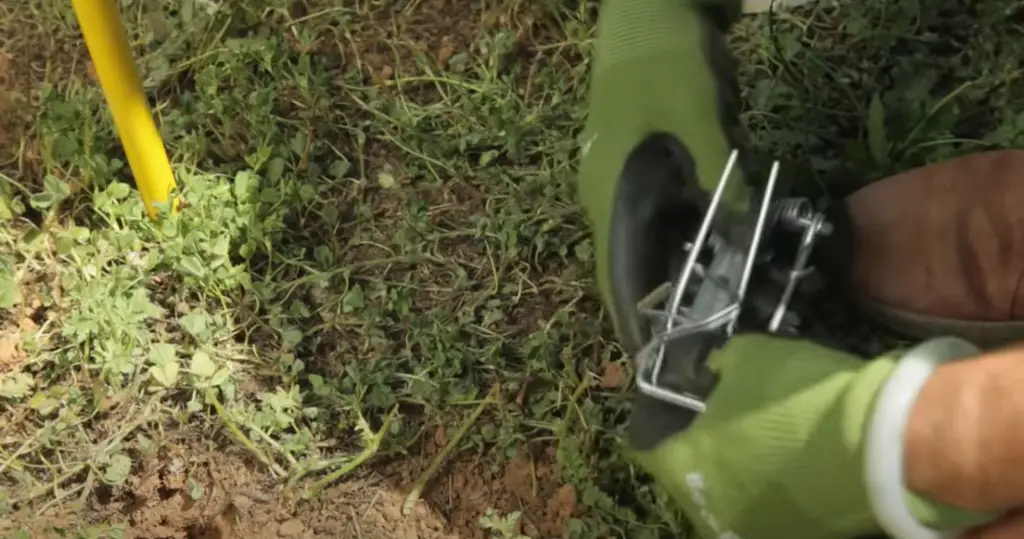
Do I have a gopher or a mole problem?
Moles and gophers can both cause similar damage to lawns, gardens, and other areas. However, they are two distinct animals that look quite different. Moles have long, slender bodies and pointed snouts while gophers have short legs, chubby bodies, and flattened tails. Additionally, moles primarily eat insects while gophers feed mostly on roots, leaves, grasses, fruit, and nuts. If you’re unsure which type of animal is living in your yard it’s best to contact a professional for help with the identification.
Are gophers protected?
Gophers are considered an important part of the food web as they provide sustenance for many species of predators. As such, they are typically not considered pests and are often protected by local laws. It’s important to research the regulations in your area before attempting to trap or poison gophers.
What do gophers hate the most?
Gophers have an aversion to bright lights, loud noises, and strong odors. To deter gophers from your garden or yard you can try placing objects with reflective surfaces near their burrows or creating a sonic barrier with devices that emit sound waves. Additionally, pungent smells such as garlic, peppermint oil, and castor oil may help keep gophers away.
Do coffee grounds get rid of gophers?
Coffee grounds can be used to repel gophers as they contain caffeine, which is an irritant to these animals. Sprinkling coffee grounds near burrows or around areas where gophers may enter your garden can help deter them from the area. Additionally, predator urine and other strong-smelling substances such as garlic oil are known to be effective at repelling gophers.
What do farmers use to get rid of gophers?
Farmers use a variety of methods to control gopher populations. These can include trapping, poison baits, and fumigants. It is important to research your local regulations before attempting to trap or poison gophers, as many areas have laws that protect them. Additionally, farmers may use physical barriers such as fencing or netting to prevent gophers from accessing their fields and gardens. If you have a gopher problem on your property it is best to contact a professional for help.
Does garlic keep gophers away?
Garlic is said to be an effective repellent for gophers. The strong odor of garlic can help deter them from your garden or yard and may even lead them to relocate their burrows elsewhere. Garlic oil, which is more concentrated than fresh cloves, has been known to be especially successful in keeping gophers away. Additionally, other smelly substances such as predator urine and castor oil are known to be effective at repelling gophers.
What time of day do gophers come out?
Gophers are most active during the day and usually come out of their burrows to feed. They typically remain in their burrows at night, as this is when predators such as foxes and coyotes may be more likely to hunt them. If you’re looking for evidence of gopher activity it’s best to search during daylight hours.
Do gophers bite humans?
Gophers rarely bite humans, as they do not typically perceive them as a threat. However, if a gopher feels cornered or threatened it may try to defend itself by biting. It is best to observe gophers from a safe distance and avoid handling them directly.
What can I plant to repel gophers?
Certain plants are believed to have repellent effects on gophers, such as garlic and castor bean plants. Additionally, marigolds and daffodils are known for their unpleasant aromas which can help keep these animals away from your garden. Planting these around the perimeter of your yard may help deter gophers from entering the area.
Useful Video: How to Keep Gophers out of a Garden Bed
Conclusion
Gophers in the garden can be both a blessing and a curse depending on the circumstances. If their burrowing behavior is damaging to your plants, then it’s important to find an effective way to control gopher populations. To get rid of gophers in the garden, there are a variety of traps and poison bait options available that can help you manage their numbers. Additionally, certain plants may act as deterrents or repellents against gophers. Carefully managing gopher populations can keep your garden safe and healthy. With some simple precautionary methods, you can enjoy your garden without getting overwhelmed by gophers.
References:
- https://www.terminix.com/blog/education/what-is-a-gopher/
- https://smithspestmanagement.com/blog/post/how-to-get-rid-of-gophers-in-your-yard-garden/
- https://www.gardendesign.com/how-to/gophers.html





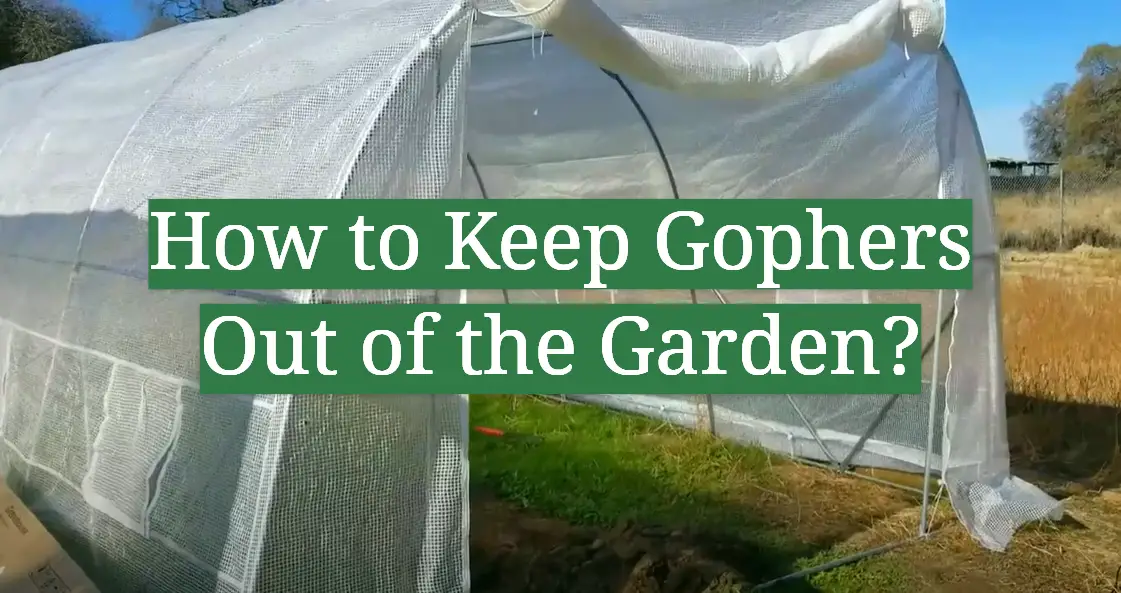




Leave a Reply
View Comments